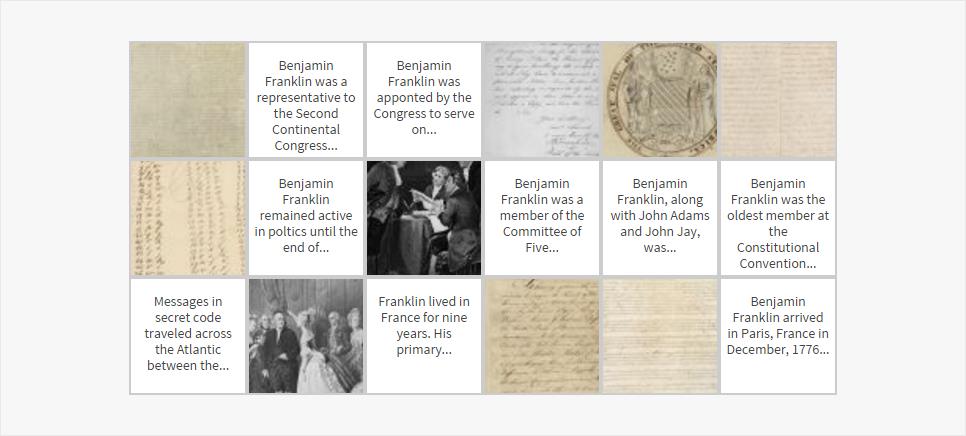In this activity, students will review and analyze the founding documents of the United States and understand Benjamin Franklin's contributions and connections to these founding documents. Franklin was the only man to help shape all of the the major documents that established the United States. The payoff document is a copy of the Joseph Duplessis portrait of Franklin that is on the U.S. one hundred dollar bill.
For the conclusion, students will choose the three most important documents that Franklin helped to shape, and reflect on the impact of the founding documents.
Suggested Teaching Instructions
Objectives
Students will gain a better understanding of Benjamin Franklin's contributions to the founding of the United States and U.S. founding documents by connecting the description of his contribution to the correct document.
Through this activity, younger students (grades 4-6) can gain an introduction to Benjamin Franklin and the founding documents.
Middle school and high school students (grades 6-12) can learn about Franklin's contributions to the founding of America, and evaluate the significance of the founding docments to American history by choosing the three documents they think are the most important documents in early American history and explaining their choices.
Instructions
This activity is intended as an individual student or small-group activity to introduce students to Benjamin Franklin's contribtuions to the founding of the United States as well as an introduction or review of the founding documents of the United States. Review basic information on the life of Benjamin Franklin. Read an age-level appropriate book to younger students about Benjamin Frainklin and the founding of the United States such as: ''John, Paul, George and Ben'' by Lane Smith or ''Who Was Benjamin Franklin?'' by Dennis Brindell Fradin.
For older students (grades 6-12), ask them to research the life of Benjamin Franklin and create a basic timeline of major events in his life. Encourage advance readers to read: ''Benjamin Franklin: An American Life'' by Walter Isaacson. After reviewing the life of Benjamin Franklin, project the activity for the entire class and choose one document from the grid with which to [http://docsteach.org/resources model document analysis].
Ask students to complete the activity on their own or in small groups, performing similar analysis with each document they click on. The activity will instruct students to match the documents with the description of Franklin's contribution to the event. (Point out that Franklin contributed to the founding of America, American culture and scientific discoveries in numerous other ways.)
Franklin's contributions include:
- Being a member of the Committee of Five assigned to draft the Declaration of Independence
- Being elected representative from Pennsylvania to the Second Continental Congress and a signer of the Declaration of Independence
- Serving as a member of the committee to design a seal for the United States of America
- Acting as a diplomat to France during the Revolutionary War
- Taking an instumental role in creating the Treaty of Alliance with France
- Being on the diplomatic team to negotiate terms for the end the Revolutionary War: Each member had his own ciphers to convey secret messages from Congress.
- Contributing to writing the Treaty of Paris to end the Revolutionary War as member of the U.S. delegation
- Contributing to the the Constitution of the United States during the Constitutional Convention
- Urging the abolition of slave trade in a letter to President John Adams
After the students make all of the matches, they will see a copy of a painting of Benjamin Franklin by Joseph Duplessis. In the "When You're Done" section of the activity, students will learn that this portrait can be found on the U.S. one hundred dollar bill. Conduct a class discussion in which students reflect on why Franklin appears on the U.S. one hundred dollar bill. Review with the students the documents to which Franklin contributed. Ask students to choose the three documents that are the most important in the founding of the United States and explain their choices.





